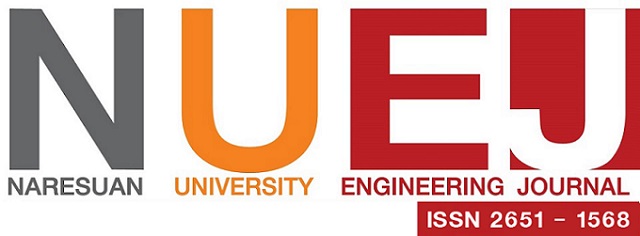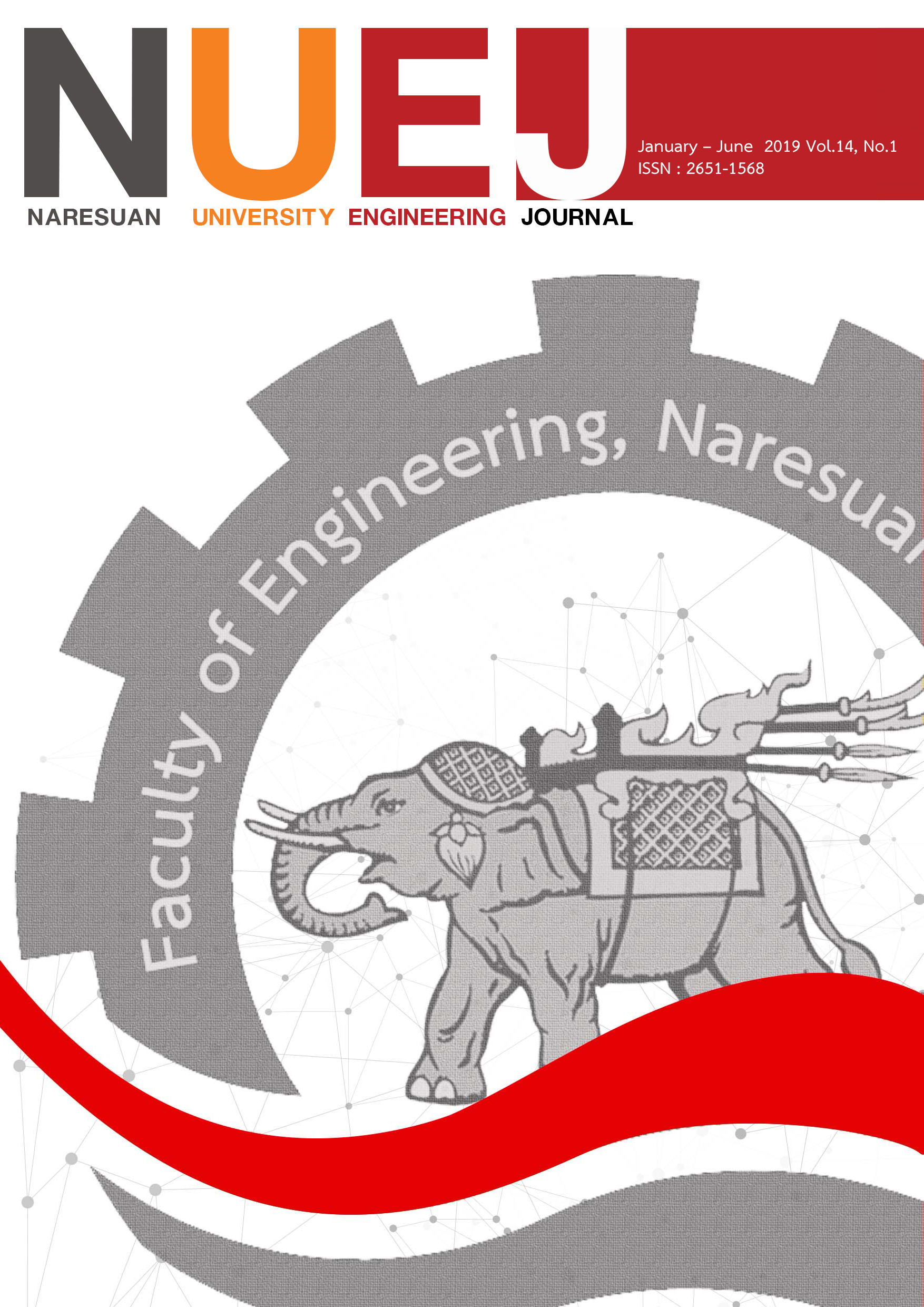การวิเคราะห์ความสัมพันธ์ของปริมาณวัสดุก่อสร้างสำหรับอาคารคอนกรีตเสริมเหล็ก ระหว่างวิธีแบบจำลองการถดถอยเชิงซ้อน และ วิธีโครงข่ายประสาทเทียม
Main Article Content
บทคัดย่อ
การจัดทำราคาเป็นกลไกที่สำคัญในการควบคุมต้นทุนโครงการในช่วงก่อนเริ่มดำเนินโครงการ ความสามารถในการตรวจสอบความถูกต้องของการถอดปริมาณจึงเป็นแนวทางการเพิ่มประสิทธิผลในการจัดทำบัญชีปริมาณงานก่อสร้าง ผู้วิจัยได้ทำการศึกษาภายใต้วัตถุประสงค์ 1). ศึกษาถึงตัวแปรที่มีอิทธิพลต่อการทำนายปริมาณวัสดุก่อสร้าง 2). เปรียบเทียบประสิทธิภาพของแบบจำลอง ระหว่างการถดถอยเชิงซ้อน และ โครงข่ายประสาทเทียม 3). อธิบายความสัมพันธ์ของเนื้องานวัสดุก่อสร้าง โดยผู้วิจัยได้ดำเนินการกำหนดกลุ่มทดสอบเพื่อเป็นตัวแทนสำหรับการจำลองสมการการถดถอยเชิงซ้อนและ วิธีโครงข่ายประสาทเทียม จำนวน 30, 32 และ 30 หน่วย และ กำหนดตัวแทนกลุ่มตัวอย่างใดๆ ด้วยวิธีการสุ่ม จำนวน 14, 15 และ 15 หน่วย สำหรับกลุ่มตัวอย่าง บ้านพักอาศัย อาคารพาณิชย์ และ อาคารพักอาศัยรวม จำนวน 136 หน่วย ตามลำดับ จากการศึกษาสามารถอธิบายได้ว่าตัวแปรที่มีอิทธิพลต่อการทำนายปริมาณวัสดุได้แก่ 1). พื้นที่เฉลี่ยต่อชั้น และ 2). จำนวนชั้น แสดงถึงการอธิบายความเปลี่ยนแปลงของตัวแปรตาม อันได้แก่ 1). งานคอนกรีต 2). งานเหล็กเสริมคอนกรีตโครงสร้าง 3). งานแบบหล่อ และ 4). งานพื้นสำเร็จรูป และ ส่วนของงานสถาปัตยกรรม ประกอบด้วย 1). งานวัสดุผิวพื้น 2). งานวัสดุผนังก่อ 3). งานวัสดุผิวเพดาน 4). งานประตูหน้าต่าง อย่างมีนัยสำคัญ อีกทั้ง วิธีโครงข่ายประสาทเทียมสามารถอธิบายการเปลี่ยนแปลงปริมาณวัสดุก่อสร้างแม่นยำกว่าวิธีแบบจำลองการถดถอยเชิงซ้อน นอกจากนั้นงานวิจัยนี้พบว่าความสัมพันธ์ของเนื้องานจากกลุ่มตัวอย่างแตกต่างกันอย่างมีนัยสำคัญ ได้แก่ 1. ปริมาณคอนกรีต (ม3) ต่อ พื้นที่ก่อสร้าง (ม2) มีความสัมพันธ์ต่อกันเท่ากับ 0.27, 0.195 และ 0.168 2. ความสัมพันธ์ปริมาณเหล็กเสริมคอนกรีต (กก) ต่อ คอนกรีต (ม3) มีความสัมพันธ์ต่อกันเท่ากับ 85.44, 118.235 และ 113.49 3. ความสัมพันธ์ปริมาณแบบหล่อ (ม2) ต่อ คอนกรีต (ม3) มีความสัมพันธ์ต่อกันเท่ากับ 9.46, 9.20 และ 9.24 4. ความสัมพันธ์ปริมาณงานก่อ (ม2) ต่อ พื้นที่ก่อสร้าง (ม2) มีความสัมพันธ์ต่อกันเท่ากับ 1.32, 1.62 และ 1.33 และ 5. ความสัมพันธ์ของ พื้นที่ประตูหน้าต่าง (ม2) ต่อ ปริมาณงานก่อ (ม2) มีความสัมพันธ์ต่อกันเท่ากับ 0.12, 0.13 และ 0.15 สำหรับกรณีศึกษา บ้านพักอาศัย อาคารพาณิชย์ และ อาคารพักอาศัยรวม ตามลำดับ
Article Details
References
[2] Zhiting Wu, Xuedong Chen. (2015). The Material Consumption Estimation Model of Frame Shear Wall Structure, Journal of System and Management Sciences. Vol. 5 No. 1, pp. 38-51.
[3] The Comptroller General’s Department. (2012). Criteria for calculating the central price of building construction.
[4] The Engineering Institute of Thailand Under H.M. The King's Patronage. (1999). Construction Management Information for Construction Price Evaluation and Control. EIT Standard, ISBN 974-7197-31-6, Bangkok, Thailand.
[5] AACE International Recommended Practice No. 18R-97. (2005). Cost Estimate Classification System – AS Applied in Engineering, Procurement, and Construction For The Process Indistries, the association for the advancement of cost engineering.
[6] Thammasak Rujirayanyong. (2012). Estimate Cost for Apartment Building Using Regression Analysis. Rangsit University Journal of Engineering and Technology, Vol. 15, No. 2.
[7] Nikhil K Gilson, Alester Joseph Vanreyk. (2014). Review of Cost Estimation Models, International Journal of Scientific Engineering and Research (IJSER), ISSN (Online) : 2347-3878
[8] Nivea Thomas, and Dr. Anu V. Thomas. (2016). Regression Modelling for Prediction of Construction Cost and Duration, Applied Mechanics and Materials, Vol. 857, pp 195-199.
[9] Worasak Thawekitjakarn. (1990). An application of regression analysis in building cost estimating, Graduate Studies, Chulalongkorn University.
[10] Somchart Manprasert. (1998). A Study on Building Construction Cost Estimate Using Work Quantity Model Approach, Master. Engnineering (Civil Engineering), Graduate Studies, Chulalongkorn University.
[11] Gwang-Hee Kim, Jae-Min Shin, Sangyong Kim, Yoonseok Shin. (2013). Comparison of School Building Construction Costs Estimation Methods Using Regression Analysis, Neural Network, and Support Vector Machine , Journal of Building Construction and Planning Research, 2013, pp 1-7.
[12] Jessada Sarasinpithak, Tanit Thongthong. (2000). A study on quantity estimation of building construction using neural network models, Master of Engnineering (Civil Engineering), Graduate Studies, Chulalongkorn University.
[13] H. Murat Günaydın S Zeynep Doğan. (2004). A neural network approach for early cost estimation of structural systems of buildings, international Journal of Project Management Volume 22, Issue 7, Pages 595-602.
[14] Azme Bin Khamis, Nur Khalidah Khalilah Binti Kamarudin. (2014). Comparative Study On Estimate House Price Using Statistical And Neural Network Model, International journal of science & technology research volume 3, issue 12, ISSN 2277-8616.
[15] Smita K. Magdum and Amol C. Adamuthe. (2017). Construction cost prediction using neural networks. ICTACT Journal on soft computing, Volume 08, Issue 01, pp 1549 - 1556.
[16] Office of the council of state. (2522). BUILDING CONTROL ACT. Retrieved from http://www.krisdika.go.th/wps/portal/general,
[17] National Statistical Office. (2011) . Population Statics, Bureau of Social Statistics. Retrieved from http://popcensus.nso.go.th/upload/popcensus-08-08-55-E.pdf
[18] Construction Specifications Institute (CSI) and Construction Specifications Canada (CSC). MasterFormat ® (2016). MasterFormat ® Numbers & Titles. Retrieved from https://www.edmca.com/media/35207/masterformat-2016.pdf
[19] U.S. Department of Commerce Technology Administration National Institute of Standard and Technology. (1999). UNIFORMAT II Elemental classification for building specifications, Cost Estimating, and Cost analysis. Retrieved from https://arc-solutions.org/wp-content/uploads/2012/03/Charette-Marshall-1999-UNIFORMAT-II-Elemental-Classification....pdf
[20] The Engineering Institute of Thailand Under H.M. The King's Patronage. (2011). Building Survey Structural and Architectural Works, Engineering of Thailand, 2nd revised edition.
[21] Associate Professor Dr. Kanlaya Vanichbuncha. (2009). Statistical analysis with Excel, Bangkok : Faculty of Commerce and Accountancy Chulalongkorn University.
[22] D.A. Clevert, T. Unterthiner and S. Hochreiter. (2016). Fast and accurate deep learning. Proceeding of international conference on learning representations, pp 1- 14
[23] The Engineering Institute of Thailand Under H.M. The King's Patronage. (2013). General conditions. EIT Standard, ISBN 978-974-7197-80-8, Bangkok, Thailand.

